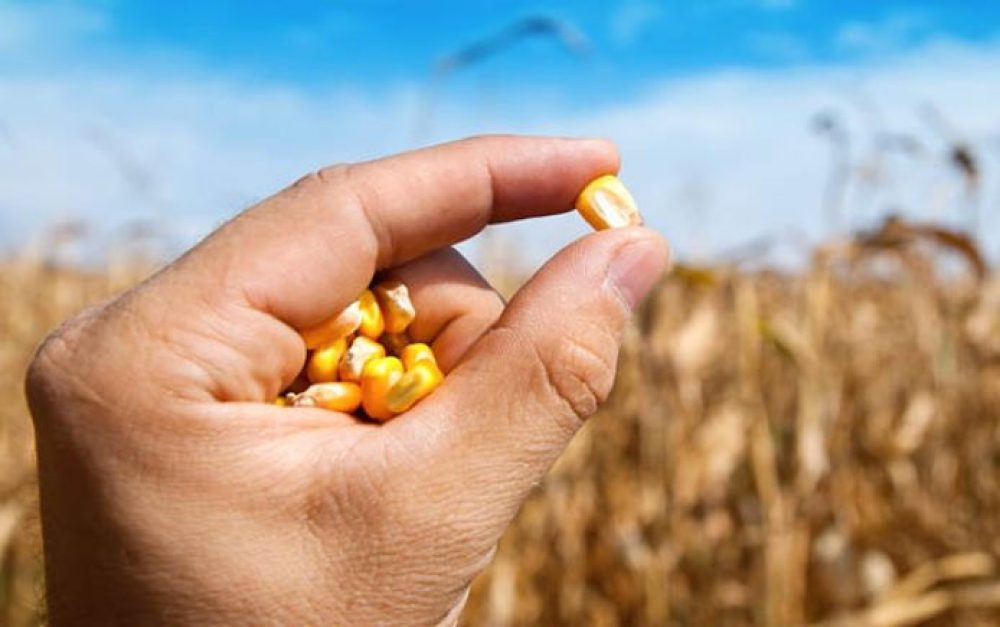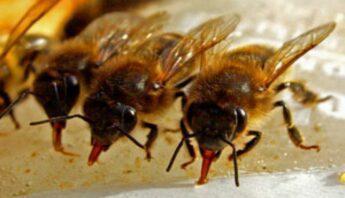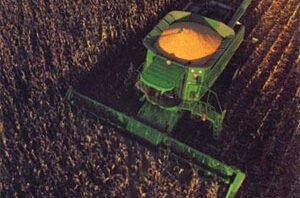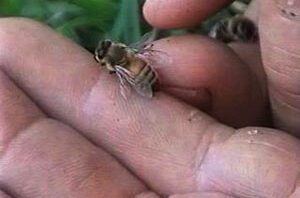94% to 98% of corn seed in the U.S. is pre-treated with neonics.
Farmers have been saying it for years: it’s nearly impossible to find corn seed that isn’t pre-treated with neonicotinoid pesticides. At a Congressional briefing in DC last week, Dr. Christian Krupke of Purdue University presented hard data to support what farmers are reporting: 94% to 98% of corn seed in the U.S. is pre-treated with neonics. This is particularly bad news for pollinators, since we know neonics pose a threat to bees even at low levels.
Dr. Krupke and other scientists have been looking at this issue more closely, and recent studies are showing that neonic seed treatments don’t actually add much value to crops. They don’t improve yields and don’t markedly reduce damage from common pests. The equation doesn’t add up. If they harm bees AND don’t add much benefit, why are these seed treatments so prevalent?
A report released by Center for Food Safety last month sums up the situation nicely. Reviewing 19 articles from scientific journals examining the relationship between neonicotinoid seed treatments and actual yields, report authors conclude that the benefits are most certainly not worth the risks:
It appears that in approving these insecticide products, the Environmental Protection Agency (EPA) has overvalued the “insurance” neonicotinoids offer against the mere risk of pest pressures, which are often not realized. This has led to heavy costs to the agricultural community and the nation as a whole.
The articles reviewed by Center for Food Safety authors include yield data for corn crops in the U.S., as well as canola, dry beans, soybeans and wheat. In addition to almost all corn seed being treated with neonics, approximately half of soybeans are coated with these bee-harming pesticides as is more than 90% of planted canola.
Farmers are faced with a lack of alternatives when sourcing seed, and they are not seeing the benefits of the widespread prophylactic application of neonics. Dr. Krupke is quoted in the report:
“Because there is no demonstrable benefit in the vast majority of fields/years we have surveyed, it is apparent that seed treatments are dramatically overused in these crops.”
The downside
Neonics are now the most widely used class of insecticides in the world, and seed treatments are a significant part of that use. They are systemic pesticides, taken up through a plant’s vascular system and transmitted throughout, including in pollen and nectar — which bees forage and drink.
Most neonics are acutely toxic to bees and single, high‐dose (i.e. acute) exposures can be lethal. That said, bees are more commonly faced with chronic, low level exposures over time as they forage in the field. Studies have shown that sub-lethal effects of neonics can include altered foraging and feeding behavior, impaired orientation and social communication, undermined immunity and delayed larval development.
All of these impacts are contributing to dramatic declines in honey bee populations, as well as native pollinators.
The bad news doesn’t stop there. Neonics are water soluble and persist in soil for years. And while a small percentage of the pesticide coating is taken up by a plant, much of it dissipates into the soil and water — accumulating over seasons of treated seed plantings.
Corn dust season
In addition to the impacts of treated seeds in the ground, the process of actually planting neonic-coated seeds comes with its own risks to bees. As we’ve written about before, a 2012 Purdue study (PDF) found two previously unrecognized exposure routes, one through contaminated “planter exhaust” and another through untreated-but-contaminated dandelions in nearby fields, from which bees are known to gather nectar and pollen.
“Extremely high” levels of clothianidin and thiamethoxam (both neonicotinoids) were found in planter exhaust material exuded into the soil and air during and after the planting of treated corn seeds. Planter exhaust — dust from the automated planting system using talc powder to keep seeds from sticking together — tends to be especially mobile in the environment, and is likely dispersing to nearby fields and other plants.
Timing is another special concern documented by this study. Corn is planted throughout the Midwest from mid-April through early May — a time when energy requirements of bees are increasing rapidly, and additional foraging is required for colony growth.
The evidence is clear: seed coatings are responsible for exposing bees to harmful pesticides on a large scale — and through multiple routes. And these pollinators, so vital to our agricultural economy and food system, are in serious trouble.
For what benefit? Not much, it turns out. Research is making it increasingly clear that seed coatings don’t significantly increase yields or improve pest control. Time for a course correction, and fast.
Photo credit: mycola/iStock







